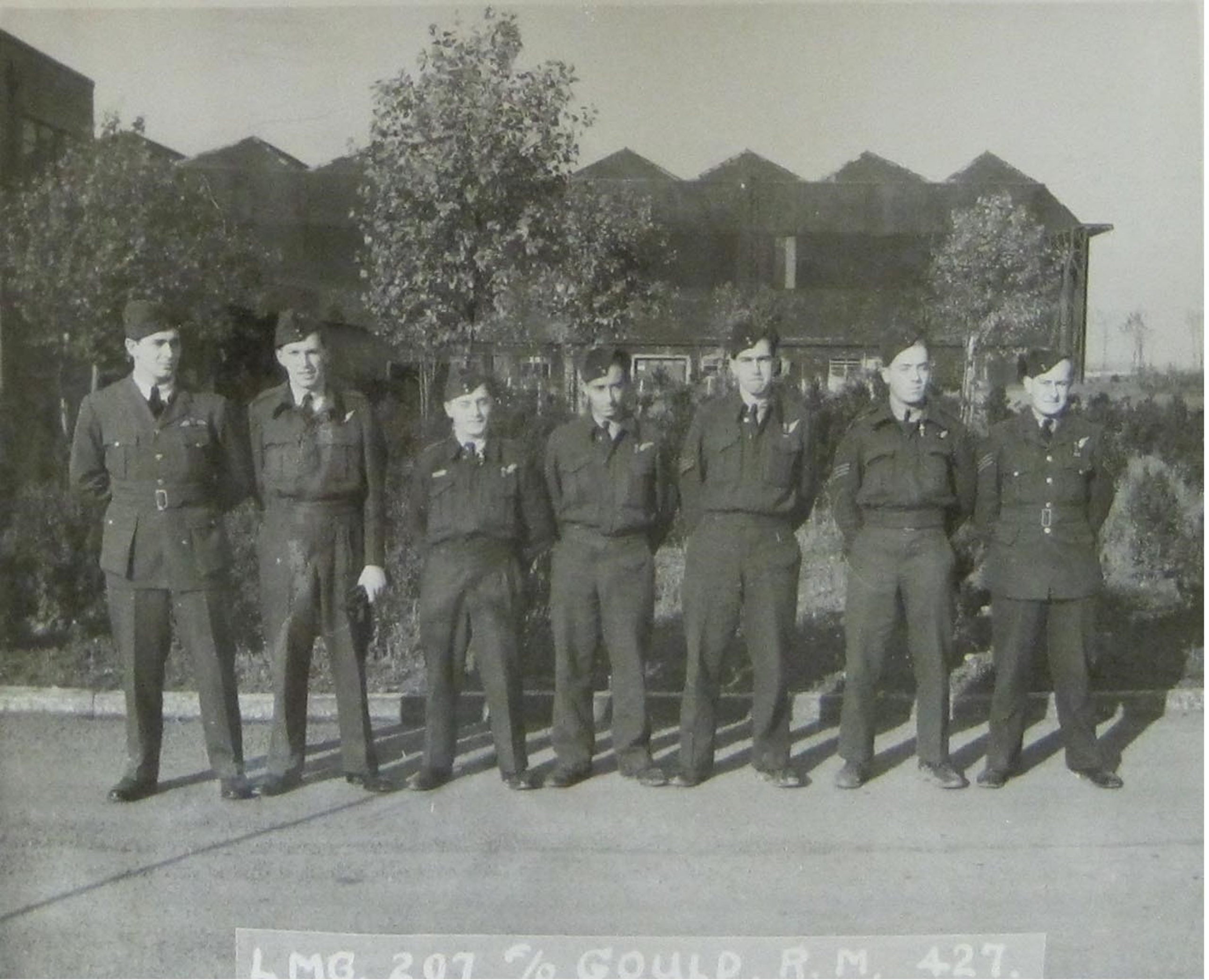The Latin American community has had a strong and lasting history in helping to defend Canadian values and ethics which are align with those of Latin America’s and on the world stage. They filled numerous positions in Canada’s military, during conflicts from confederation onwards and the Communications and Electronics Branch is proud to remember one of its members: Sergeant Wireless Operator/Air Gunner Francisco Lua Manzo, a Latin American who participated in the Second World War flying in bombers with the Royal Canadian Air Force (RCAF).
Sergeant Manzo put his ideals of freedom first and travelled to Vancouver, British Columbia to join the RCAF on 18 February 1943. Sergeant Manzo opted for Canada due to the speed of deployment and professionalism this help the fight. After completing his Wireless Operator / Air Gunner Training in Canada, he was posted overseas to the United Kingdom at the beginning of October 1943. Sergeant Manzo Joined the 427 “Lion” Bomber Squadron RCAF on 31 October, 1944 which was part of the 6 Bomber Group. Like many other Canadian bomber squadrons, 427 flew the Wellington at the beginning of the war.
On 7 November, 1942, 427 Squadron was formed at Croft as part of No. 4 Group. Two months later on 1 January 1943, the unit was transferred to No. 6 (R.C.A.F) Group. During its move to Leeming, North Yorkshire, in May 1943, the squadron converted to Halifax bombers and used them for most of the war until March of 1945 when the Lancaster replaced it. The Lancaster would serve as the primary squadron aircraft for the remainder of operations.
After hostilities in Europe, 427 Sqn remained in England as part of Bomber Command’s strike force, under which it airlifted Allied prisoners of war, and British troops from Italy, back to England. The squadron was disbanded at Leeming, Yorkshire on 1 June 1946.

From Left to Right, Sergeant Manzo was part of the following crew:
Flight Lieutenant Rob M. Gould (Pilot)
Flight Officer R.A. Graham (Navigator)
Flying Officer C.H. Robinson (Bomber aimer)
Sergeant F.L. Manzo (Wireless Operator)
Sergeant Killburn C. Embree (Engineer)
Sergeant J.D. Dixon (Rear Gunner)
Sergeant Chuck H. Holstron (Mid Upper Gunner)
Sergeant Manzo and his Crewmates flew 30 combat missions with heavy bombers, 18 Handley MK.III and 12 in Avro Lancaster MK. I. He completed his tour of operations on 25 April 1945. He returned to Canada then he was discharged from the RCAF on 17 August 1945. Following his discharge, he returned to Mexico.
The main function of a Wireless Operator on a multi-engine aircraft during the Second War World was to retain contact with base stations, using Continuous Wave Morse Code. In a Lancaster they were often seated forward near the Navigator and acted as a reserve gunner while also addressing issues throughout the plan when not staffing the radio. Wireless Operators were well trained as it was a great deal more complicated to send and receive code while airborne than that in stable land-based radio stations.
Airborne Wireless Training was a major part of the curriculum at each of the four British Commonwealth Air Training Plan (BCATP) Wireless Schools. When the Second World War started, there was a deal signed in 1939, Canada agreed to provide facilities and training for airmen from every part of the Commonwealth for the BCATP. Canada was ideally fit for this program because our country was remote from most of the active fighting and had lots of exposed spaces and good flying conditions. Training in the BCATP was tough and difficult. Pilots, wireless operators, air gunners, air observers, and flight engineers went through months of training at specialized schools.
Shining a new light on Canadian history, Captain Garcia-Salas has spearheaded the historical compilation and first ever awareness campaign for the contributions of the Latin American community in the Canadian Armed Forces (CAF) during the Second World War.
His research has been featured in several media publications from the CBC to CAF/Government of Canada and is included in the memoire “Latin American Soldiers in Canada Remembrance Book Vol. 1”, which was published on 14 April 2023. For the first time, and largely due to Capt Garcia-Salas’ efforts, Canadian High Schools and Universities will have the opportunity to include the Latin American war contributions in the Canadian school curriculum.
By: Captain Rey Garcia-Salas






